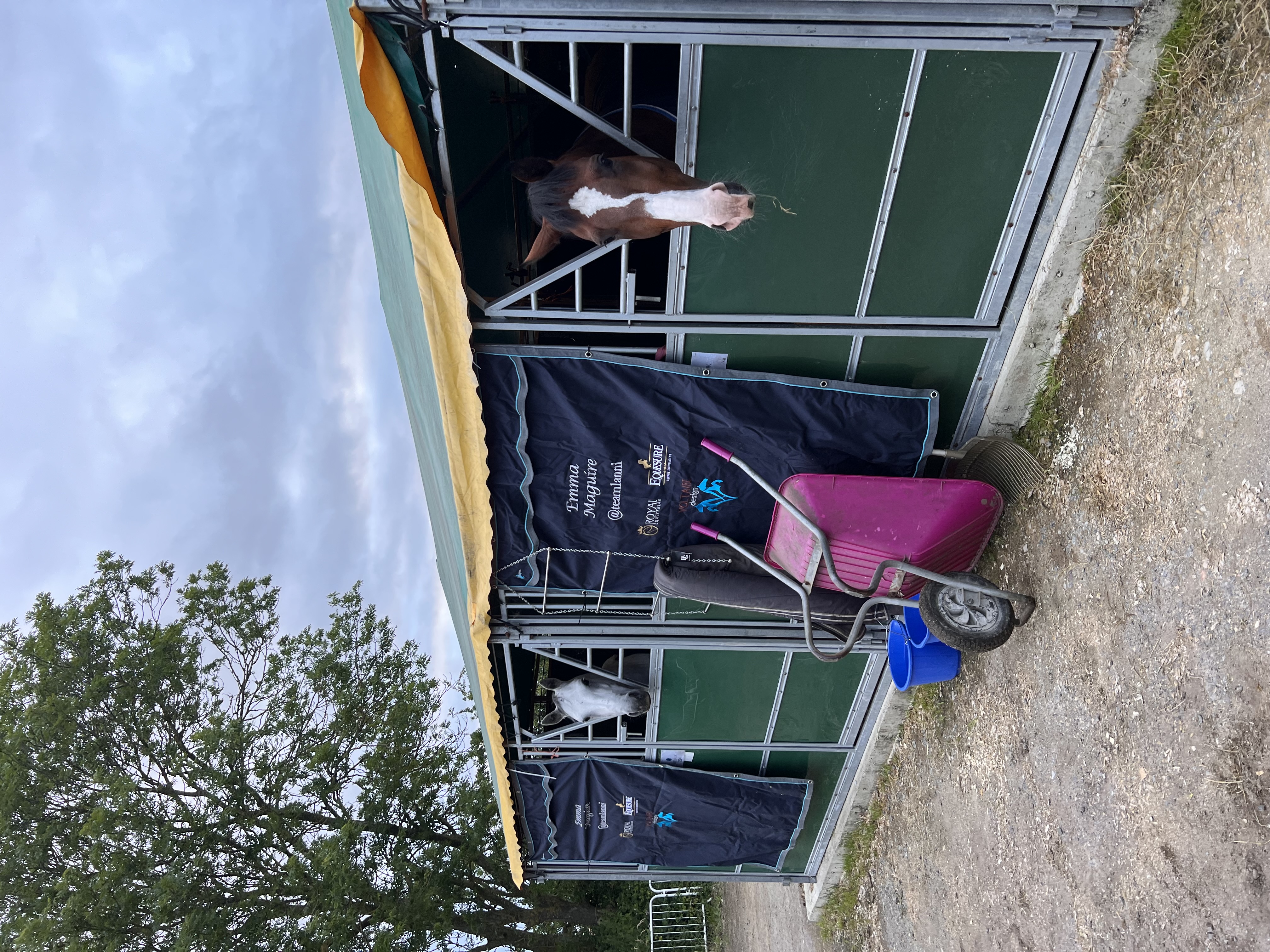You may or may not be familiar with the name Cushing's disease but, in particular if you are the owner of an older horse, it may well be worth familiarising yourself with the common signs.
One of the major reasons for this is that Equine Cushing's disease can be a factor in the onset of laminitis, a serious and painful condition that can cause permanent damage to the hooves.
We recommend keeping an eye out for some of the signs that we've listed below. We also recommend finding adequate insurance for your horse to help ensure a happy, healthy future for you and your horse.
Equine Cushing's disease – an introduction
Also known as PPID, Equine Cushing’s disease is found in around 20% of horses over the age of 15. It’s the fifth most common disease recognised in horses and ponies in the UK. The name derives from Harvey Cushing, an American doctor who described a different, but related disease in people.
A progressive condition, Cushing’s disease can bring with it a range of symptoms that, in turn, can affect your horse’s quality of life.
The key thing to note here is that some of the early signs that your horse may show – such as mild changes to their coat, for example – may not in themselves seem worrying.
Over time, however, Cushing’s disease will progress, bringing with it some more severe symptoms that may impact on your horse’s enjoyment of life.
These later, more serious signs can include recurrent infections, lethargy – and laminitis, a common but extremely painful condition whereby the tissues bonding the hoof wall to the pedal bone in the hoof deteriorate, resulting in the pedal bone sinking or rotating within the hoof.
Indeed, this potential to induce laminitis, itself a serious complaint, constitutes one of Cushing's disease's major threats.
Conditions like these can be very hard for your horse to live with, and this is why early diagnosis of Equine Cushing’s disease – even if the emerging signs in your horse don’t yet seem to affect them adversely – will give you more options to manage and treat the illness before it starts to bring with it more serious complaints.
Ensuring that you're equipped with some good horse insurance may also help you to cope with any financial burden brought on by your horse's ongoing care programme.
If Cushing’s disease is diagnosed and treated early, there is no reason why your horse cannot continue to live a happy and healthy life.
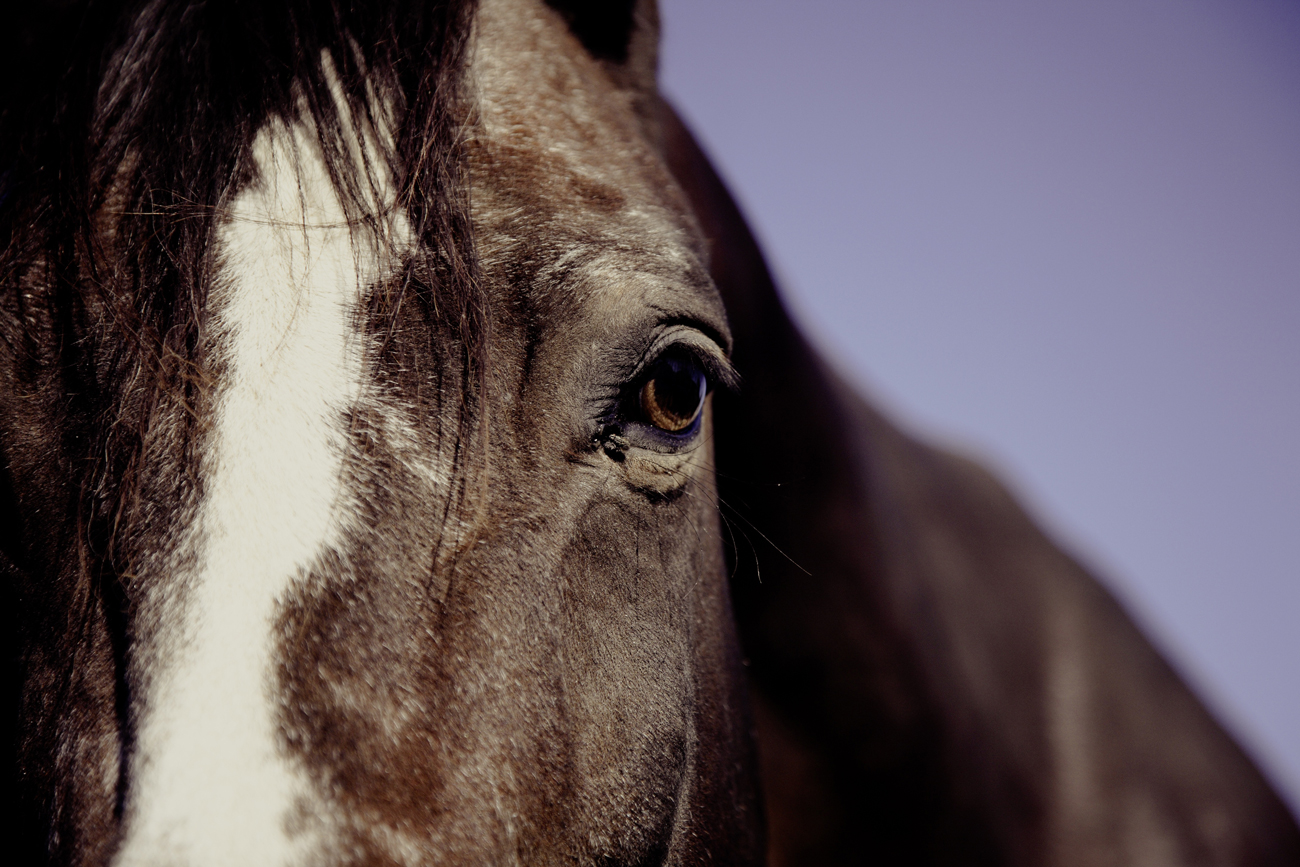
The biology behind the disease
The correct veterinary term for Equine Cushing’s disease is Pituitary Pars Intermedia Dysfunction, or PPID. This name reflects the fact that PPID affects the pituitary gland, which is found at the base of the brain.
In healthy horses (and in humans), a hormone called dopamine controls the pituitary gland, producing various other hormones which, themselves, help to maintain and controlling a variety of key bodily functions.
In this way, the pituitary gland is sometimes referred to as the 'master gland', as it controls several other glands in the body.
Horses and ponies with PPID aren’t producing sufficient quantities of dopamine, with the result that the pituitary gland becomes uncontrolled and produces too many hormones.
How to spot the signs
This disease can produce quite a range of signs in different horses and ponies. It’s a good idea to become familiar with all the signs we’ve listed below, and to regularly monitor your animals for all of these potential giveaways.
In fact, owners may often not spot the early clinical signs of Cushing’s disease – or, if they do, they will attribute them to old age. These early signs include the development of a pot belly, and the loss of a 'topline' over the back – both associated with reduced muscle mass and strength.
Here are the key signs to look for:
Laminitis
Equine Cushing’s disease is a common underlying cause of laminitis.
Vets now believe that ‘subclinical’ Cushing’s disease (where the disease is already present, but with as yet no clinical signs) may be present for months or even years before the onset of laminitis.
Therefore, recognising and treating the disease promptly could reduce the risk of laminitis.
Lethargy
A general lack of energy is a common early sign of the disease. This particular development can be difficult to spot as it will often make itself known very gradually – and, after all, the disease primarily affects older horses, who will be expected to become more lethargic in any case.
However, it’s still a good idea to be vigilant for signs of lethargy in your horse – they may show less enjoyment in their exercise, for example, or seem less interested in you or in the world around them.
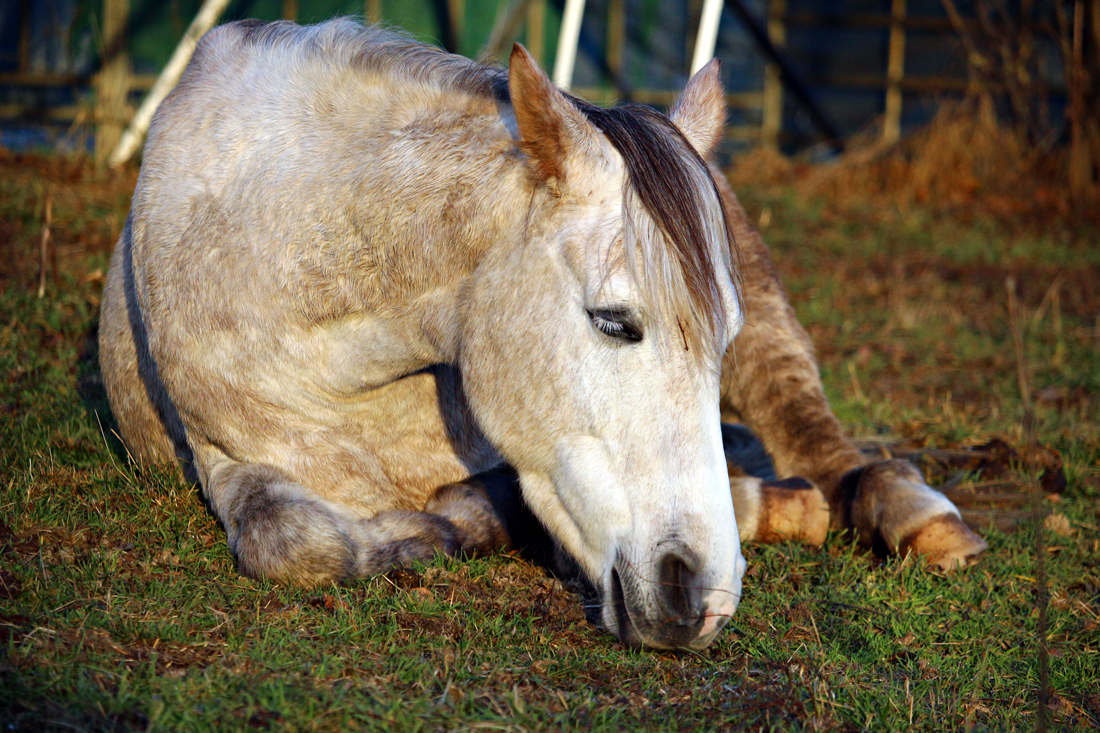
Recurrent infections
Equine Cushing’s disease can also make horses more susceptible to various forms of infection.
Clues here could be an infection that doesn’t seem to respond to treatment as expected, or an infection that keeps returning. Such infections might include recurrent sinusitis, chronic endometriosis, recurrent foot abscesses, and chronic periodontal (gum) disease.
Your horse insurance policy may help when it comes to any treatment required, should any of these conditions develop.
Reduced fertility
Mares with Equine Cushing’s disease may still go in and out of ‘heat’ regularly, but it is believed that their fertility, and ability to get in foal, may be reduced by the disease.
Increased thirst / urination
This can be a difficult sign to spot, as you won’t be constantly monitoring your horse’s drinking and/or urinating habits. What you can do, however, is to keep an eye on how much bedding you are using to keep the stable dry (a sudden increase could be a clue), and/or keep track of how often you are needing to fill up their water trough.
Muscle wastage
This sign is usually seen as a loss of topline (the muscle groups that run along the spine), causing your horse’s back to appear to sag. The rate at which this happens, however, depends on your horse’s breed, athleticism, and how much fat they are carrying.
Elsewhere, if a horse is carrying excess weight, the muscle underneath this fat will be lost (in the case of Cushing’s disease) faster than the fat itself, making the fat appear ‘lumpier’ than usual.
Abnormal fat deposits
Another sign of Equine Cushing’s disease is the development of areas of fat in abnormal places. Most visible may be a pot belly and/or small ‘fat pads’ over or around the eyes.
Excessive or abnormal sweating
If your horse is sweating in somewhat patchy or abnormal patterns, or if they seem to sweat an excessive amount after some low-level exercise on a cool day, you should be on the alert for other signs of the disease.
Abnormal coat
Your horse may develop abnormalities in their coat, whether excessively long hair (‘hypertrichosis’), and/or delayed – or even absent – moulting.
This particular sign will often be easier to spot in native breeds, as they usually have a thick winter coat. When it comes to more fine-coated breeds, the change to their coat will tend to be subtler. In this instance, look out for any unusually long hairs on the limbs, or underneath the belly or neck.
This sign will also reveal itself in different ways depending on the disease’s level of advancement.
Early stages of Cushing’s disease may present delayed moulting and patches of long hair, whereas more advanced stages will usually result in a more generalised long coat and/or a complete loss of the seasonal moulting pattern.
Which horses are at risk?
Any horse can develop Equine Cushing’s disease. There are, a couple of factors that can influence a horse’s susceptibility.
Firstly, age seems to be a key factor, with Equine Cushing’s mostly affecting horses over 10 years old.
There have been rare reports of horses as young as seven contracting the disease, but it seems most prevalent in horses aged over 15. This is another factor in making it increasingly advisable to have some strong horse insurance as your horse matures.
The other key factor is breed: Equine Cushing’s disease appears to develop more frequently among native breeds, and to be relatively less common in thoroughbred horses.
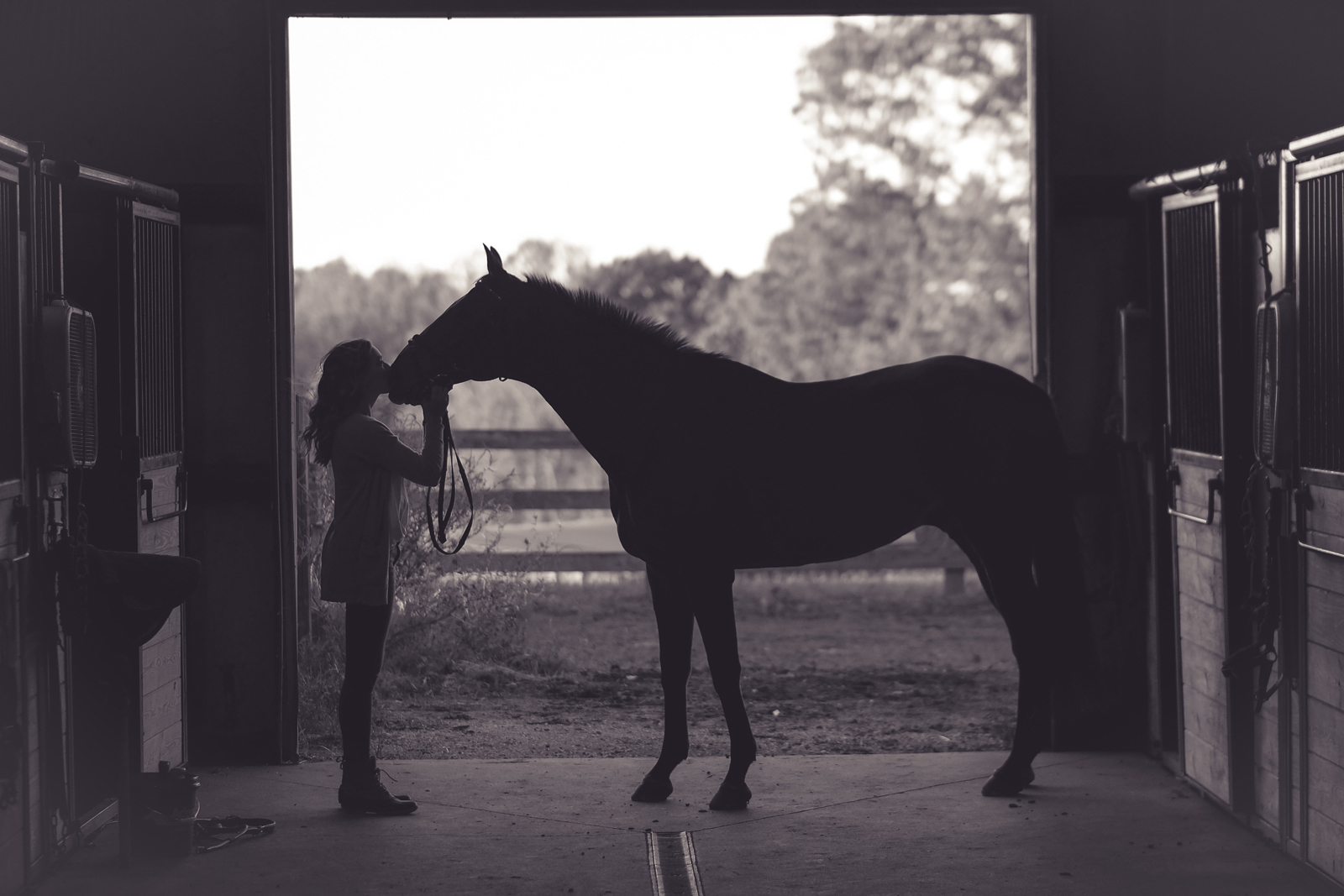
What to do next
If you believe you have recognised one or more of the above signs in your horse, there are some simple steps you should take to ascertain if they have the disease.
These steps will also reveal how you should manage the disease so that your horse can continue to live a happy and healthy life.
If you suspect that your horse is showing any signs of Equine Cushing’s disease, excluding laminitis, you’re advised to make an appointment with your veterinary surgeon.
Ask them to examine your horse, and to advise you on whether a test is the next step.
What to do next: laminitis
The advice is different if you suspect that your horse is displaying signs of laminitis. In this case, you should contact your veterinary surgeon immediately.
Even mild ongoing laminitis can be painful for your horse in the long run, and rapid attention and treatment are essential to relieve the pain and to ward off any long-term harm. Your horse insurance may help to cover any costs incurred by vet's bills and treatment.
While you wait for the vet to arrive, you can help your horse in the following ways:
- Remove them from pasture, as long as they can walk without pain. Do not, however, force a horse with laminitis to walk without a vet present.
- Lay out some deep bedding in your horse’s stable (or, if moving them is not possible, in their field). Shavings are best here, as they are most comfortable to stand on. Cover the entire stable floor, so that your horse remains comfortable throughout.
- Make sure your horse can get to their food (which should be soaked hay) and water easily.
- Have your horse’s passport readily available. The vet will need information from this when prescribing pain relief.
- Stay calm. As ever, your horse will pick up on your emotions – you don't want to be sharing your anxiety.
If, on arrival, your vet diagnoses laminitis, they will treat the pain immediately. They will also recommend some next steps as far as trimming, farriery, and management are concerned.
The long term: how to manage Cushing’s disease
A diagnosis of Equine Cushing’s disease will be distressing: but you should rest assured that it is perfectly possible for your horse to continue to enjoy a good quality of life. There are a few things you can do to try to ensure continuing health and happiness for your equine.
Nutrition
Providing your horse or pony with the correct nutrition can go a long way to helping them manage life with Equine Cushing’s disease.
Generally, their dietary needs will be similar to those of normal, unaffected horses: however, some sufferers will show certain clinical signs such as weight loss, obesity, or a predisposition to laminitis. These factors bring with them their own nutritional requirements.
If you would like to learn more about the nutrition of horses with Equine Cushing’s disease, you can register as a member of the organisation Care About Cushing’s, where you will find an informative section on ‘Feeding horses with Equine Cushing’s disease’.
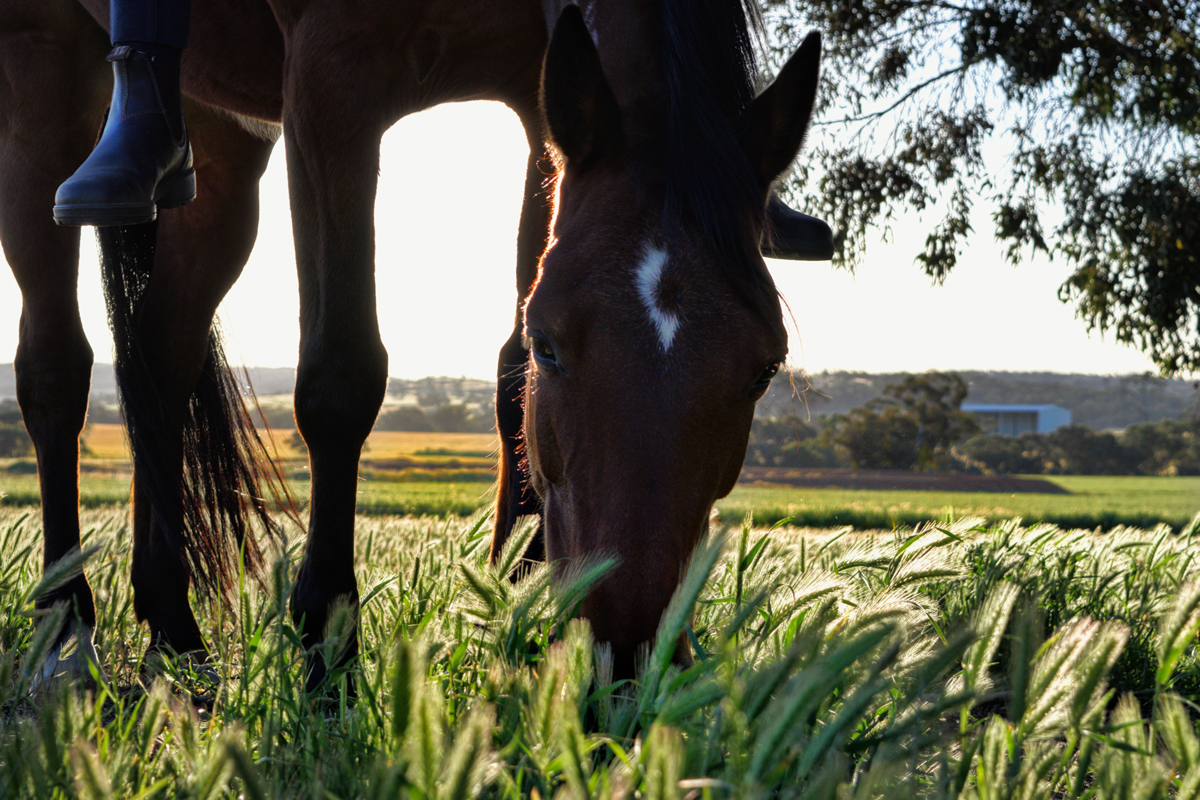
Healthcare
Equine Cushing’s disease is one of a range of common diseases to which older horses are susceptible. These diseases can be grouped into dental, respiratory, cardiac, musculoskeletal and skin disorders.
It's important to note that horses with untreated Cushing’s disease will have a reduced immune system, and therefore can be more at risk from infectious diseases such as worm infestations, viral infections or dental disease.
It follows that horses suffering from the disease should be maintained in the best possible health, in order to keep these other diseases at bay as far as possible.
This can be done via a series of healthcare measures – such as paying careful attention to nutrition, hoof care and dental care, and keeping up with vaccination and wormer administration.
Horse insurance from Equesure
At Equesure, we know that you care deeply for your horse or pony, and that you want to know that – in the event of any illness – your animal is in good hands.
A strong horse insurance policy can go a long way towards helping provide good quality care for your horse.
Features and benefits of horse insurance can include:
- Vet’s fees cover up to £4,500 per incident but with unlimited number of claims within the policy year.
- Personal dental cover available on some policies up to £1,750 if required.
- An additional discount for insuring more than one horse.
- Personal accident cover up to £20,000.
- Public liability cover up to £5 million.
- Loss of use cover available with all insurers.
- Cover for death, theft or straying of horse.
Contact us today to arrange the cover to suit you and your horse.
Policy benefits, features and discounts offered may very between insurance schemes or cover selected and are subject to underwriting criteria. Information contained within this article is accurate at the time of publishing but may be subject to change.
